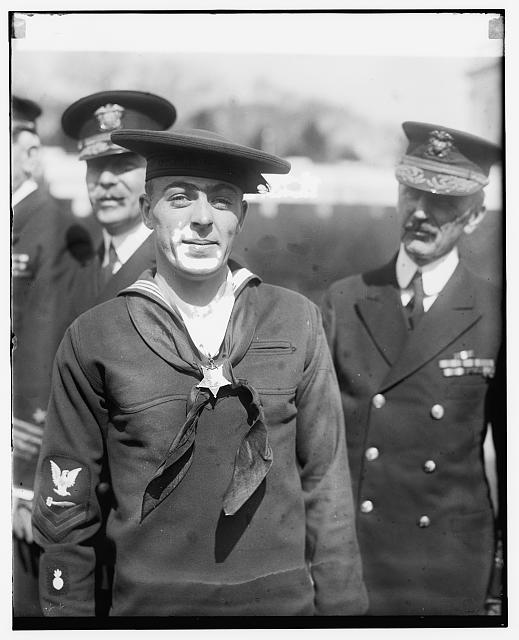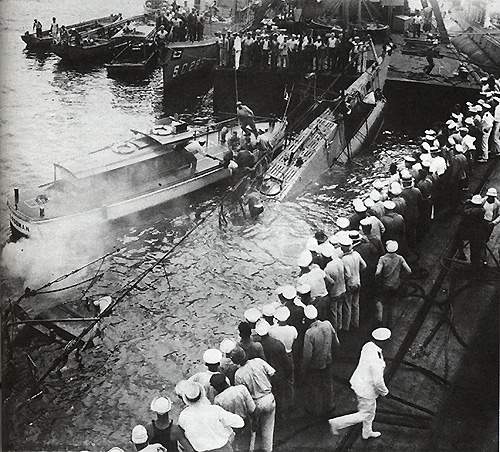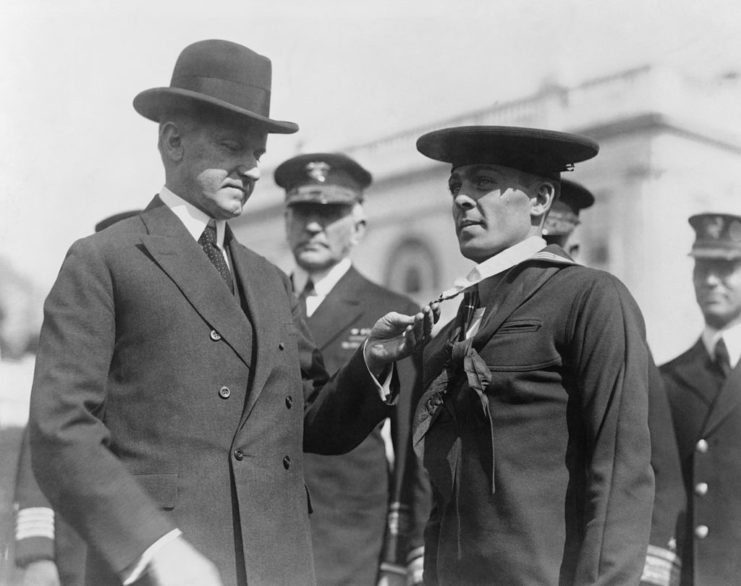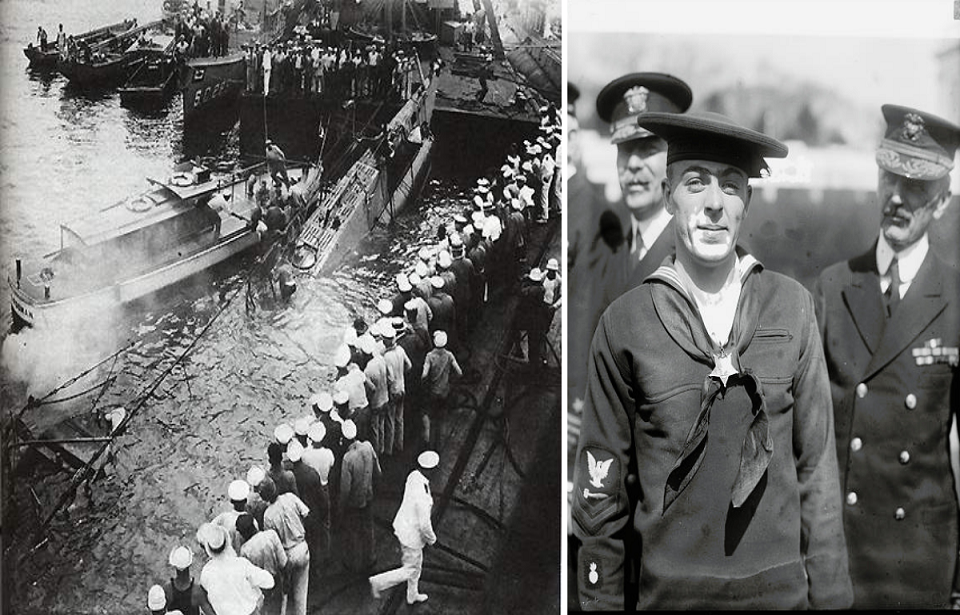Although the mere act of serving onboard a submarine may be considered heroic, the US Navy has only awarded the Medal of Honor to a single serving submariner. The MoH was awarded to Henry Breault, a Torpedoman’s Mate aboard the USS O-5. Ironically, this lone Medal of Honor was earned during peacetime.
Breault was born in Putnam, Connecticut on October 14, 1900. At the age of just sixteen, he joined the Royal Navy and served under the British during WWI. Four years later he joined the US Navy.
Up until then, Breault had served a relatively normal career at sea, but in 1923 he would unknowingly make history.
Breault onboard O-5

Breault was a Torpedoman’s Mate aboard the USS O-5, a 570-ton O-class submarine built during WWI. These submarines were designed for coastal defense and carried four 18 inch torpedoes and a single 3-inch deck gun.
After operating out of the Submarine School at New London, Connecticut, O-5 was sent to Coco Solo in the Panama Canal Zone. On October 28, 1923, as she prepared to enter the Panama Canal, she was accidentally rammed by the cargo ship Abangarez.
The collision tore a 10-foot hole in O-5’s control room and the submarine quickly sank. Three men on O-5 were killed in the incident, but 16 of the crew managed to escape. Breault was one of the lucky ones and could have carried on and leaped to freedom, but before leaving the doomed vessel he realized a crew member was still inside. He climbed back in and closed the deck hatch behind him.
Chief Electrician’s Mate Lawrence Brown had been asleep when the accident happened, and although he was now awake, he was not aware that the order to abandon ship had been given. Breault reached Brown and the two men tried to escape through the control room, but the ongoing flooding made this impossible. They then moved to the torpedo room and managed to close the door just as the batteries in the battery compartment exploded.
O-5 came to rest at a depth of 13 meters.
On the surface, recovery efforts had immediately begun.
Recovery

To begin with, divers tapped on the side of the submarine to establish whether anyone had even survived. As they made their way along, they received a reply from the inside. Rescue attempts went into overdrive.
The job of safely getting the men out of the submarine was extremely challenging. With the technology available at the time, the only practical means of doing so was by lifting O-5 entirely out of the water. As the men were near the bow, only this portion would need to be lifted above the surface.
There are certainly worse places to sink, as the Canal Zone was shallow and home to large amounts of heavy-duty machinery ideal for helping the situation. Two of the largest crane barges in the world were nearby. One of these barges, Ajax, was quickly moved to O-5.
Divers frantically dug a channel under the bow of the submarine so cables could be placed under it. One of the divers, Sheppard J. Shreaves, worked tirelessly to dig the channel under the submarine, working throughout the night. In the end, Shreaves would remain in his diving suit for a full 24 hours.
As soon as the channel was ready, lifting cables were attached and Ajax started to lift the submarine out of the water. But the cables snapped. Another two attempts were made but they were also met with failure.
Breault and Brown had no food or water and were exposed to high pressure and foul air inside the submarine. They calculated that they could survive for about 48 hours, and attempted to make as few movements as possible to conserve their energy.
The fourth attempt to lift O-5 worked, with the bow protruding from the surface. Breault opened the hatch to the outside world and the men were saved after 31 hours inside the submarine.
Medal of Honor

After his heroic actions of returning to the stricken O-5 to save a fellow sailor, Breault was awarded the Medal of Honor by US President Calvin Coolidge at the White House on March 8, 1924. In addition, Shreaves, the diver who worked continuously to save the men, was awarded the Congressional Life Saving Medal. Breault and Brown presented the medal to him.
More From Us: Only Two Submarines have Sunk Ships since 1945, here are their stories
Breault remained in the Navy but developed a heart condition later in his career. He passed away at Naval Hospital at Newport, Rhode Island, on 5 December 1941. The attack on Pearl Harbor came just two days later.
